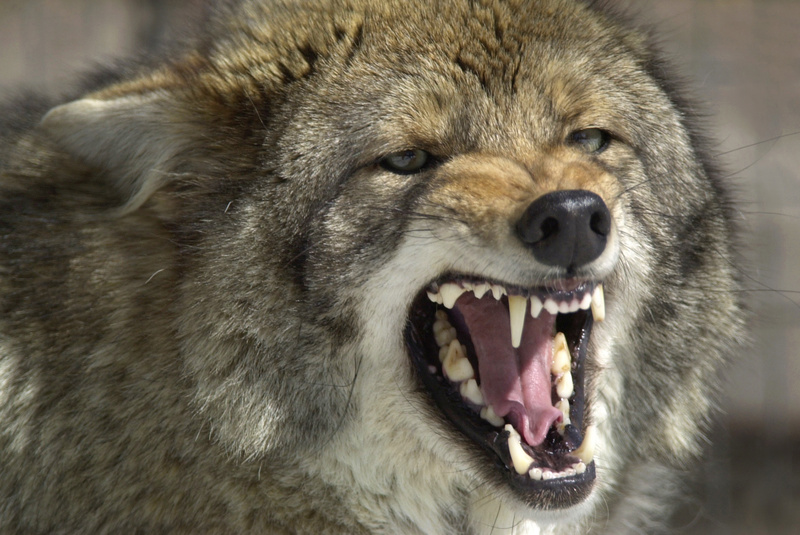Sitting in a tree stand for hours on end can get monotonous; so I sometimes pass the time reading. I’ve lately adopted the guilty pleasure of reading crime novels, but on this trip I was in the mood for something a little more substantive, and decided it was a good time to reread Aldo Leopold’s “A Sand County Almanac,” a collection of essays on conservation.
For those who don’t know, Leopold is considered the father of wildlife management. He literally invented the discipline nearly a century ago and his writings, including “Almanac,” remain required reading for anyone pursuing a career in natural resource management.
In my opinion, they should be required for everyone who uses the great outdoors as well.
Deer sightings had been uncharacteristically low on this trip and it was several days into the hunt when the reason suddenly burst into the clearing beneath me. Coyotes. All the hunters in our group had remarked about seeing or hearing coyotes on a regular basis, often traveling in groups of three or four.
I hastily grabbed my bow and the pack departed even more quickly than they’d come, minus one member. The significance of my actions was not lost on me, particularly after what I’d just read.
In an essay entitled “Thinking Like a Mountain,” Leopold recounts the day he saw a wolf die by his own hand. He and several companions were eating lunch on a high rim rock when they spied a pack of wolves below.
“In those days we had never heard of passing up a chance to kill a wolf,” he writes. “In a second we were pumping lead into the pack, but with more excitement than accuracy.”
In his later years, Leopold came to rue his action.
“I was young then, and full of trigger-itch; I thought that because fewer wolves meant more deer, that no wolves would mean a hunters’ paradise.”
Ostensibly, my actions toward the coyote might seem similar to the young Leopold’s hasty and thoughtless killing of a wolf. In truth, they were more a result of having read the book, and subscribing to the philosophies within.
Leopold developed the concept of wildlife management at a time, not unlike now, when human populations were threatening the environment. Rivers were being polluted and dammed. Forests were being leveled and converted to cropland and wildlife species were pushed to the brink of extinction, and beyond.
Then, as now, a philosophy of letting nature take its course was both naive and a woefully inadequate solution. Leopold realized that because we’d already upset the balance to such an extent, humans needed to take deliberate action to remedy our misdeeds. We needed to manage wildlife populations.
But we need to do so thoughtfully. In general, I am not an advocate of single-species management programs like predator control that favor one species over another, a viewpoint that sometimes makes me unpopular among my hunting peers. But as a wildlife biologist, I realize there is sometimes an appropriate time and place for them.
I have worked to control populations of herring and great black-backed gulls where they threatened the viability of more sensitive seabird species. I’ve assisted in removing predators where they threatened populations of waterfowl and other ground-nesting birds (including threatened and endangered species).
I have even culled deer where they represented a threat to the environment (through severe overbrowsing) and to human health and safety (by car-deer collisions and the spread of Lyme disease).
Recent research has shown coyote predation is having a significant impact on deer populations, not just in Maine, but in other Northeastern states and other areas of the country.
In northern and eastern Maine at least, coyote predation is above the level that deer populations can withstand and still remain healthy. In other areas it’s not that bad, yet. But the impact is measurable and more significant than it’s ever been.
There is a political side to wildlife management as well. One cannot overlook the fact that nearly all wildlife conservation is funded through the sale of hunting and fishing licenses. And according to the most recent federal survey, deer hunters comprise more than 80 percent of all hunters 16 years and older.
Take away the deer, hunters go away and funding for everything from bog turtles to butterflies goes with them. In an indirect way, maintaining healthy deer herds is vital to the perpetuation of all wildlife conservation efforts nationwide.
Just as Leopold’s mountain needs wolves, Maine needs coyotes. Relative newcomers on a geologic time scale, they are none the less now a part of our wild fauna. pursuing deer, they keep individuals wild and wary, and by culling the sick and the weak they keep the herd healthy.
But the mountain needs deer too, as both a part of our wildlife community and a commercial recreational resource.
When predator and prey populations co-exist harmoniously, we can subscribe to the philosophical musings of Leopold’s “Sand County Almanac.” But when systems become grossly unbalanced, it’s time to follow the prescriptions from another of his masterpieces: “Game Management.”
Bob Humphrey is a freelance writer, Registered Maine Guide and certified wildlife biologist. He can be contacted at:
bhhunt@maine.rr.com
Send questions/comments to the editors.



Success. Please wait for the page to reload. If the page does not reload within 5 seconds, please refresh the page.
Enter your email and password to access comments.
Hi, to comment on stories you must . This profile is in addition to your subscription and website login.
Already have a commenting profile? .
Invalid username/password.
Please check your email to confirm and complete your registration.
Only subscribers are eligible to post comments. Please subscribe or login first for digital access. Here’s why.
Use the form below to reset your password. When you've submitted your account email, we will send an email with a reset code.